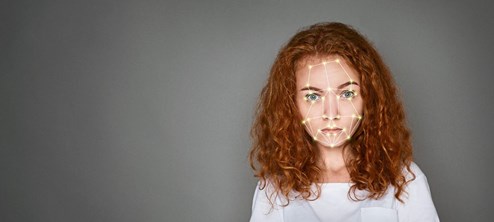In Europa stoßen passionierte Barzahler fast nirgendwo auf Probleme, ihre Scheine und Münzen loszuwerden. In China ist das anders. Dort haben mittlerweile selbst Supermärkte oft nicht mehr das nötige Wechselgeld. Jährlich erledigen 600 Millionen Chinesen ihre Zahlungen direkt mit dem Smartphone – und immer öfter auch mit einem Lächeln. Dafür muss der Kunde an der Kassa kurz in eine Kamera schauen, fertig. Per biometrischer Identitätsverifizierung ist der Zahlvorgang abgeschlossen. Sogar immer mehr Bankomaten funktionieren per Gesichtserkennung, um – ironischerweise – Bargeld auszuspucken.
Lukrative Sonderangebote verleiten die Kundschaft dabei gezielt zur Nutzung dieser neuen Systeme. Auch ganze Hotels setzen bei Check-ins sowie Essens- und Getränkebestellungen oder anderen Upgrades nur mehr auf das Gesicht als Bezahlmethode. In U-Bahn-Stationen werden damit bereits testweise automatisch Fahrten abgerechnet – in Spitälern Medikamentenrechnungen direkt bezahlt.
Was bringt das?
Die Vorteile des „Smile to pay“-Systems, wie Alibaba- und Alipay-Gründer Jack Ma die neueste Errungenschaft seines Riesenkonzerns gerne beschreibt, liegen auf der Hand. Es ist zunächst einmal sehr praktisch: nie mehr Stress an der Kassa wegen einer vergessenen Geldbörse. Gestohlen werden kann ein Gesicht auch nicht. Vor allem aber ist das System sehr sicher: Technologieskeptiker vermuteten zwar immer wieder, dass man mit Masken oder gar mit einem einfachen Foto oder Video einer Person solche Programme hinters Licht führen könnte. Die Technik aber ist mittlerweile so ausgereift, dass mit bestimmten High-End-Geräten ein Betrug praktisch unmöglich ist. Das Marketing für die Gesichtserkennungssoftware betont vor allem diesen Sicherheitsfaktor. Ist das wirklich sicher? Durchaus. Der Software hilft es dabei, wenn sich Menschen vor der Kamera leicht bewegen, den Mund öffnen oder einfache Grimassen schneiden.
Damit misst die Kamera in 3D-Manier diese menschlichen Züge mit bis zu 16.000 Netzknotenpunkten im Gesicht aus und erkennt so signifikante Tiefen, Schatten und Abstände im Gesicht wieder. Auch eine neue Frisur, starkes Make-up, eine neue Brille oder tiefe Augenringe vom Schlafentzug machen der Software nichts aus.
Zieht Europa nach?
Bargeld ist in Europa – mit Ausnahme des Nordens – immer noch sehr präsent. Für hiesige Verhältnisse wirkt Bezahlen per Gesichtserkennung zunächst einmal befremdlich. Doch auch hier bewegt sich viel an Kassa und Bankomat: Plastikkarten lösen Münzen und Papier immer öfter ab, die Schnellkassen nehmen zu. Das betrifft besonders hohe, aber zusehends auch ganz kleine Beträge, für die man nicht Unmengen an Kleinkupfer zusammenklauben oder retour bekommen möchte.
So können die Kunden der spanischen Caixa-Bank seit Februar dieses Jahres an über 20 Bankomaten per Gesichtserkennung Geld beheben. Die Bank hatte vor der Einführung ihre Kunden nach deren Meinung gefragt. Zwei Drittel wollten Gesichtsscans als Option, vor allem der Sicherheit wegen. Im Lauf des Jahres will die Bank weitere Bankomaten auf die neue Technik umrüsten. Und das spanische Kreditinstitut BBVA lässt in seinem Hauptquartier mittlerweile rund 1.000 Mitarbeiterinnen und Mitarbeiter per Gesichtserkennung bezahlen – etwa fürs Mittagessen in der Kantine.
In Europe, passionate cash payers almost nowhere encounter problems getting rid of their notes and coins. This is different in China. In China, even supermarkets often no longer have the change they need. Every year, 600 million Chinese make their payments directly with their smartphones – and more and more often with a smile. To do this, the customer has to take a quick look at a camera at the cash desk, and that’s it. The payment process is completed by biometric identity verification. Even more and more ATMs are using face recognition to – ironically – spit out cash.
Lucrative special offers tempt customers to use these new systems. Even entire hotels rely more on the face as a payment method when it comes to check-ins, ordering food and beverages or other upgrades. In subway stations, this means that trips are automatically billed on a trial basis – in hospitals, medication bills are paid directly.
What are the benefits?
The advantages of the „Smile to pay“ system, as Alibaba and Alipay founder Jack Ma likes to describe the latest achievement of his giant company, are obvious. First of all, it’s very practical: no more stress at the cash desk due to a forgotten purse. Nor can a face be stolen. Above all, however, the system is very secure: technology sceptics repeatedly suspected that such programs could be hoodwinked with masks or even with a simple photo or video of a person. But the technology is now so mature that fraud is practically impossible with certain high-end devices. Marketing for facial recognition software emphasizes this security factor above all. Is it really safe? Absolutely. It helps the software when people move slightly in front of the camera, open their mouths or make simple grimaces.
The camera measures these human features in a 3D manner with up to 16,000 network nodes in the face and thus recognizes significant depths, shadows and distances in the face. Even a new hairstyle, strong make-up, new glasses or deep rings under the eyes from sleep deprivation do not bother the software.
Is Europe following?
Cash is still very present in Europe – with the exception of the North. By local standards, paying by face recognition initially seems strange. Plastic cards are increasingly replacing coins and paper, and the number of fast cash registers is increasing. This concerns particularly high, but increasingly also very small amounts, for which one does not want to pick up or get back huge amounts of small copper.
Since February of this year, customers of the Spanish Caixa Bank have been able to withdraw money at over 20 ATMs using face recognition. The bank had asked its customers for their opinion before the introduction. Two thirds wanted face scans as an option, mainly for security reasons. In the course of the year, the bank plans to convert more ATMs to the new technology. And the Spanish bank BBVA now has around 1,000 employees at its headquarters paying by face recognition – for lunch in the canteen, for example.

